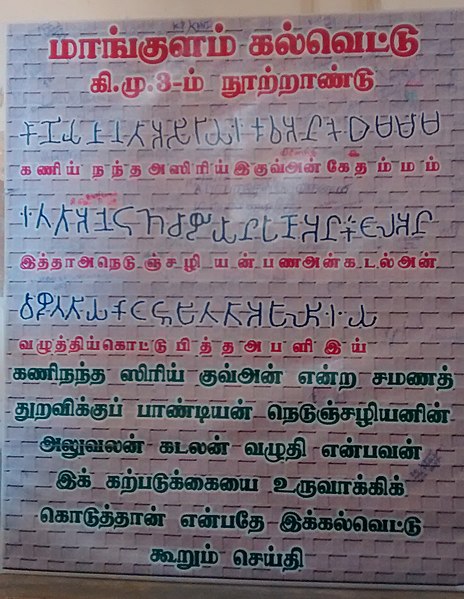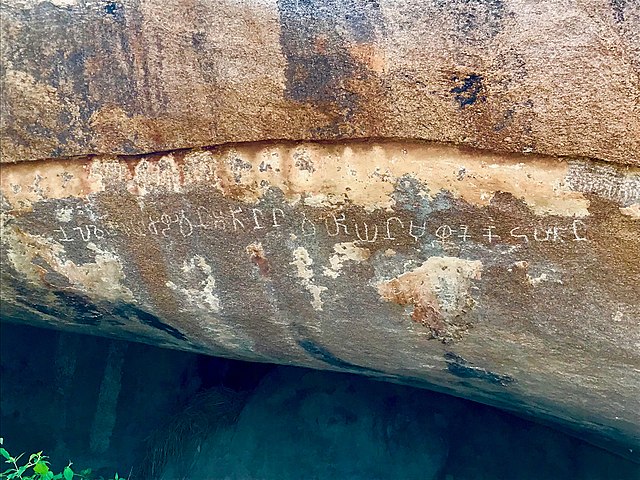Mangulam or Mankulam is a village in Madurai district, Tamil Nadu, India. It is located 25 kilometres (16 mi) from Madurai. The inscriptions discovered in the region are the earliest Tamil-Brahmi inscriptions.
Mangulam Jain inscriptions (model)
The longest inscription at the site, and the earliest known Tamil-Brāhmī inscription. It records the gift by the Pandya king Neṭuñceḻiyaṉ of a monastery to the senior Jain monk Nanta-siri Kuvaṉ.
Information board by Department of Archaeology, on the left is description about the Mangulam Tamil Brahmi inscriptions and actual translation is on the right.
Mangulam inscriptions explained.
Tamil-Brahmi, also known as Tamili or Damili, was a variant of the Brahmi script in southern India. It was used to write inscriptions in the early form of Old Tamil. The Tamil-Brahmi script has been paleographically and stratigraphically dated between the third century BCE and the first century CE, and it constitutes the earliest known writing system evidenced in many parts of Tamil Nadu, Kerala, Andhra Pradesh and Sri Lanka. Tamil Brahmi inscriptions have been found on cave entrances, stone beds, potsherds, jar burials, coins, seals, and rings.
Mangulam Tamil-Brahmi inscription at Dakshin Chithra, Chennai. It was discovered by Robert Sewell in 1882, and deciphered by Subrahmanya Aiyer in 1924.
A 2nd-century BCE Tamil Brahmi inscription from Arittapatti, Madurai India. The southern state of Tamil Nadu has emerged as a major source of Brahmi inscriptions dated between the 3rd and 1st centuries BCE.
Stone bed with inscription in Sittanavasal, Tamil Brahmi Inscriptions
Jambai Tamil Brahmi inscription








